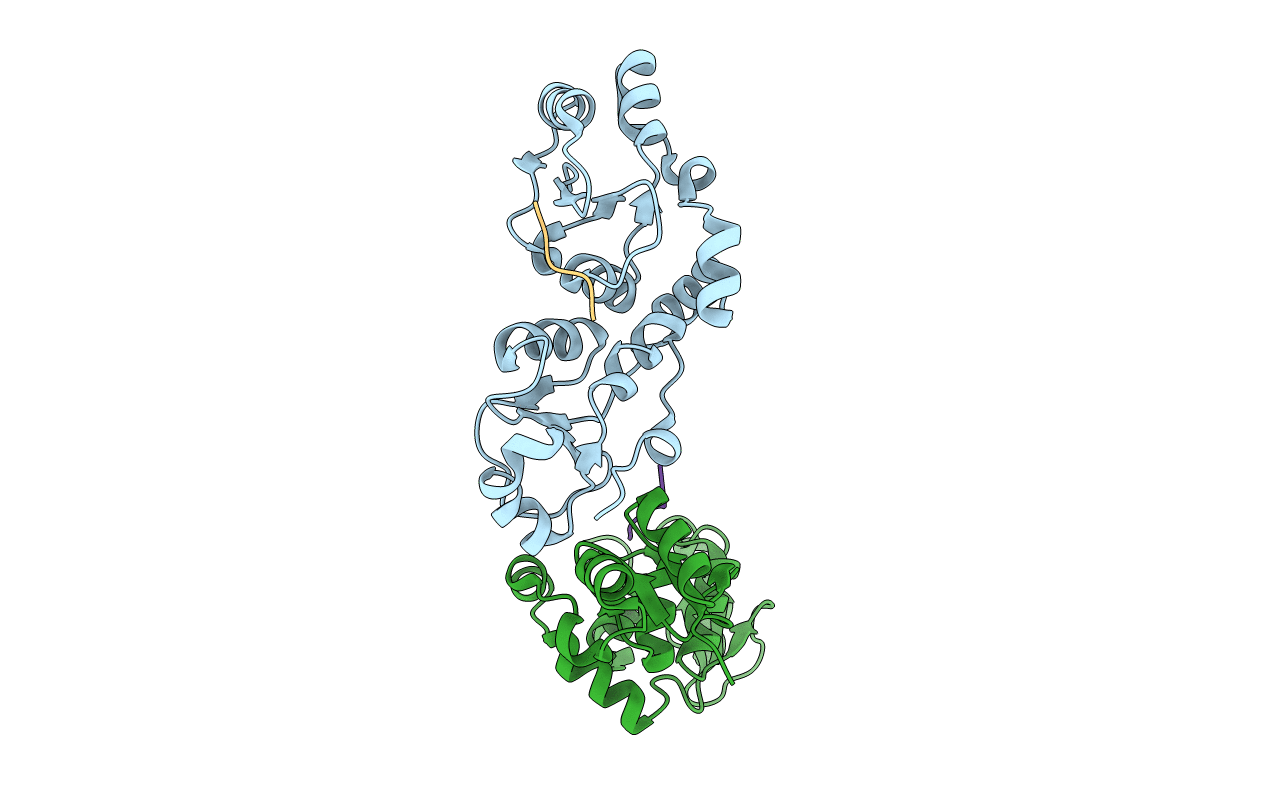
Deposition Date
2005-09-12
Release Date
2006-01-31
Last Version Date
2024-10-23
Entry Detail
PDB ID:
2AZM
Keywords:
Title:
Crystal structure of the MDC1 brct repeat in complex with the histone tail of gamma-H2AX
Biological Source:
Source Organism:
Homo sapiens (Taxon ID: 9606)
Host Organism:
Method Details:
Experimental Method:
Resolution:
2.41 Å
R-Value Free:
0.24
R-Value Work:
0.19
R-Value Observed:
0.19
Space Group:
P 21 21 21


